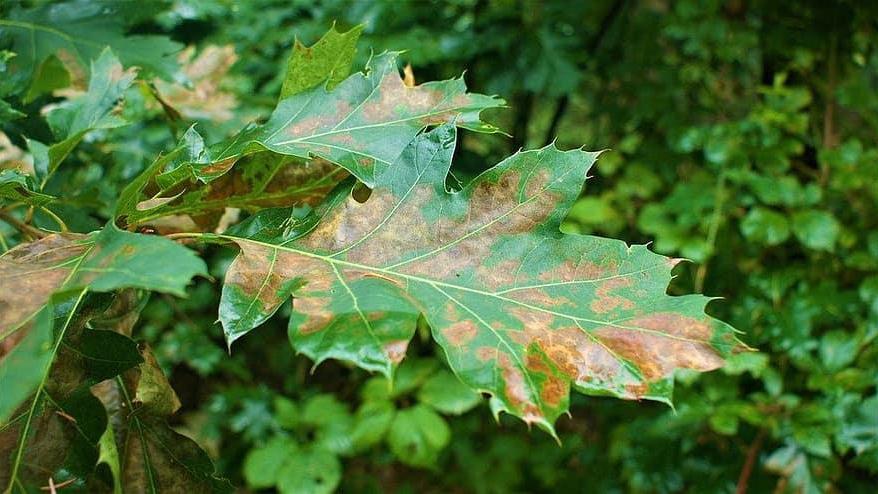Heat: Plant Stress in High Temperatures
How extreme heat affects plants

Plants have limited ability to regulate temperature and begin to experience stress as air temperatures rise above 86°F.
Water evaporation through pores in the leaves is the primary cooling mechanism used by plants. If a plant doesn’t have enough water, the pores in the leaves close and the plant can no longer keep itself cool. When temperatures are exceptionally high and prolonged, plants can lose water through evaporation much faster than the roots can absorb it.
Wilted, drooping leaves, resulting from a combination of excess water loss and high internal temperatures, are often the first signs of heat stress.
Sunburn is another type of heat damage caused by excessive exposure to direct sunlight. Sunburned leaves and stems become discolored and appear scorched.
Plants experiencing continued heat stress will be unable to maintain the processes necessary for growth and development and will become stunted and vulnerable to insect attack.
What can be done to reduce heat stress?

Water thoroughly in the morning on days when high temperatures are expected, to help plants cope with excess heat. If discovered in time during a heat wave, a drooping wilted plant can often be revived with additional water.
Watch for radiant heat - Pay special attention to plants next to walkways, patios, and other structures that radiate heat. They may be the first to show signs of heat stress and the need for extra water.
Add mulch - Apply two to four inches of organic mulch over the root areas around garden plants, trees, and shrubs. This will lower soil temperature and diminish moisture loss.
Provide shade - Use shade cloth to provide direct sun protection and reduce the air temperature around sun and heat-exposed plants.
Avoid applying fertilizers during extreme heat as they stimulate growth and add to plant stress. Fertilizers also absorb moisture from the root zone.
Harvest ripening fruit to give plants a break during hot spells. Fruiting plants will drop flowers during periods of extreme heat in order to conserve energy.
